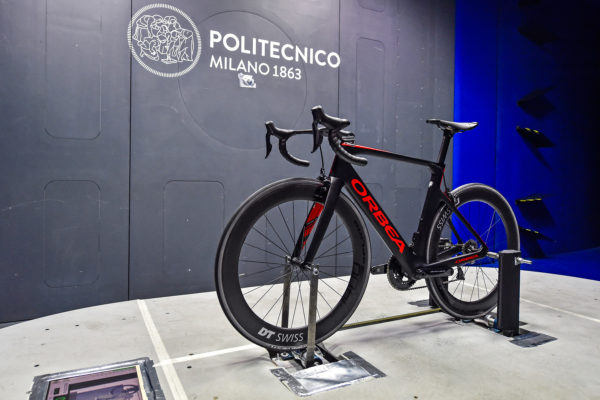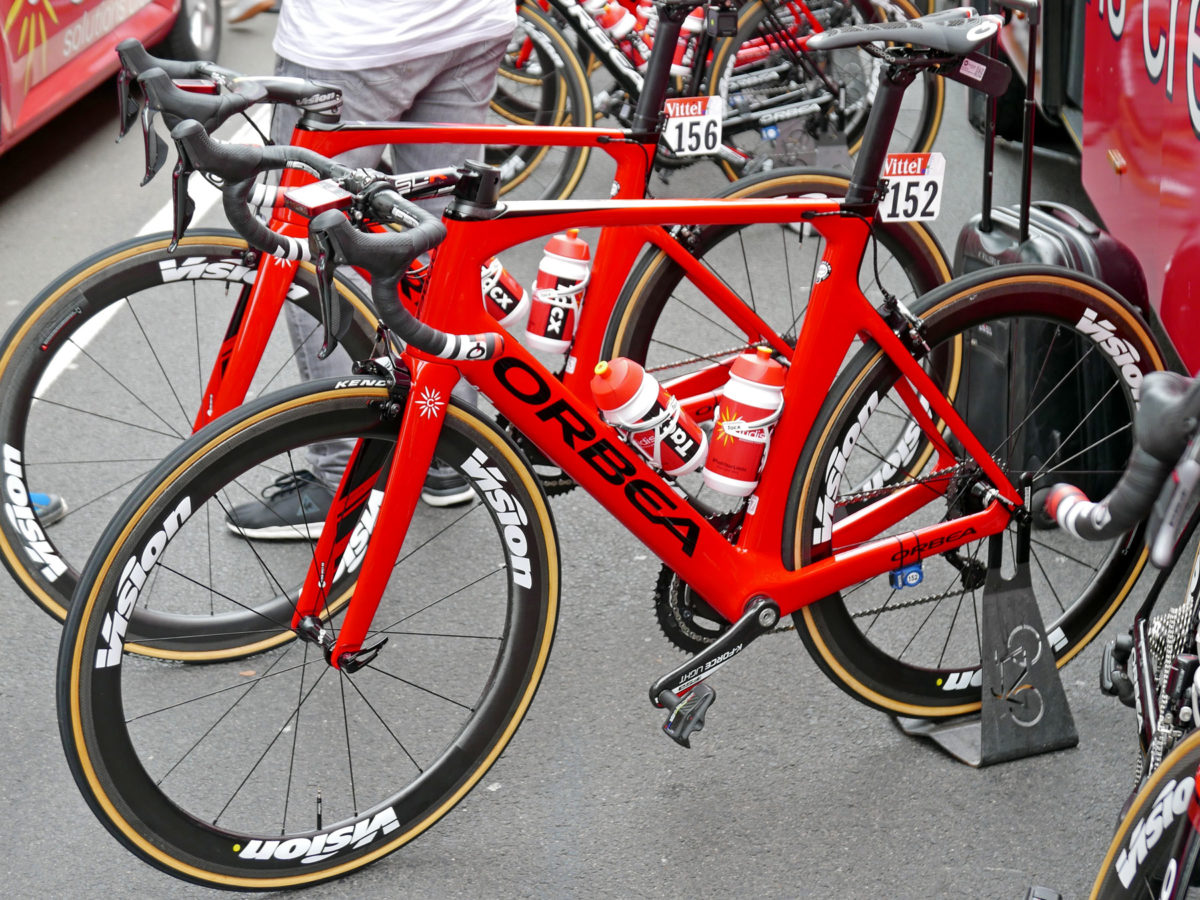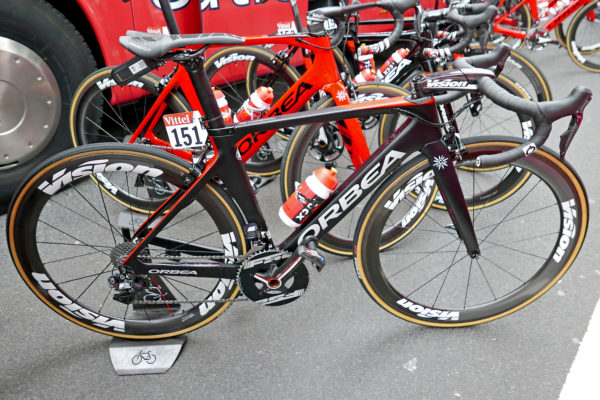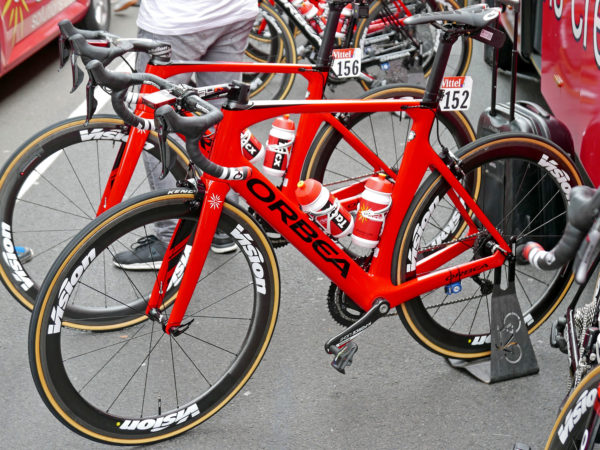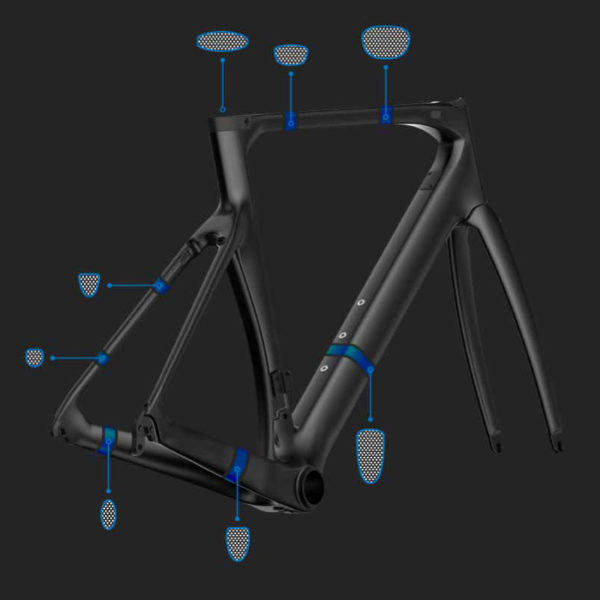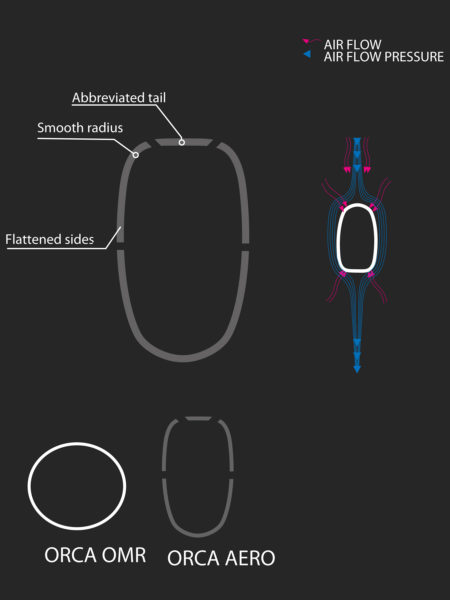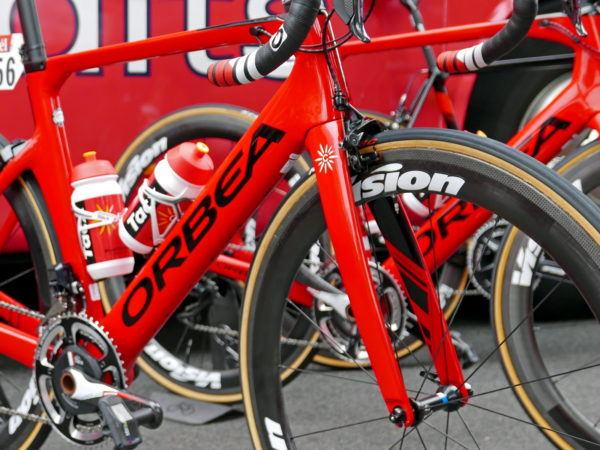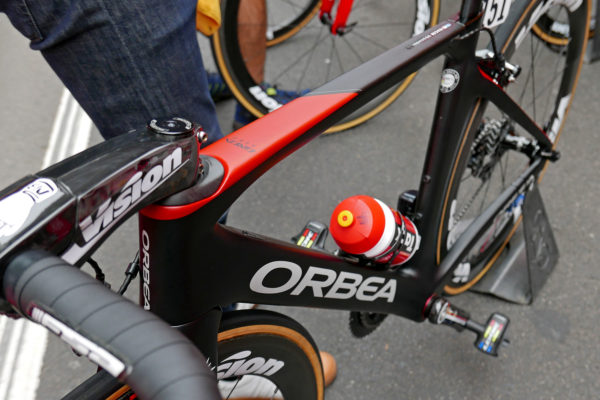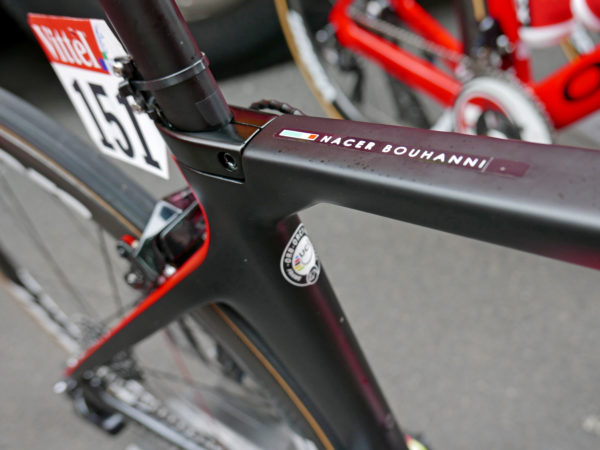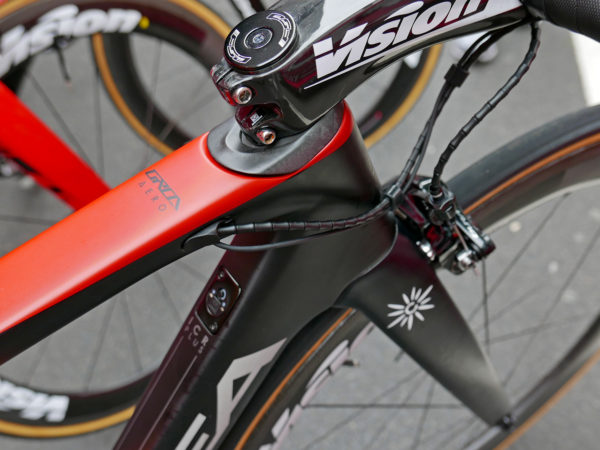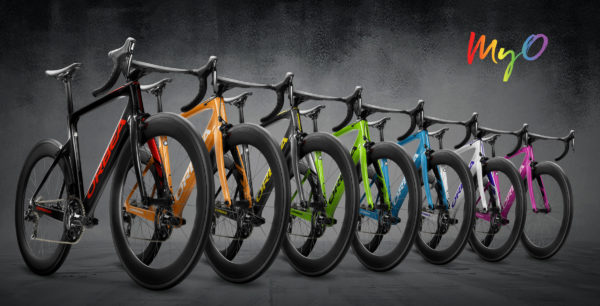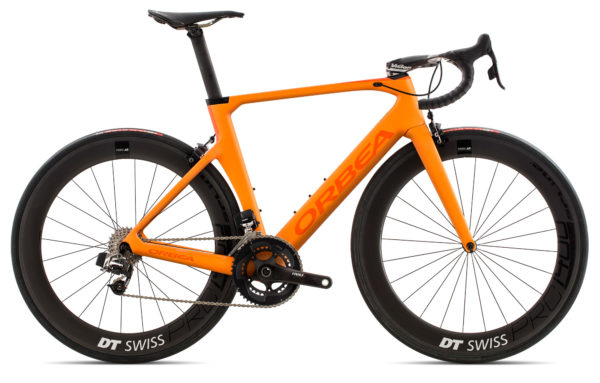The latest generation of Orbea’s top-level road racing Orca OMR had brought a few aero improvements when it was introduced last fall in both rim & disc brake versions. But now with another season of pro Grand Tour racing underway, their Cofidis team needed a proper aero bike to stay at the front of the peloton on those long stages out in the wind. So yesterday at the first road stage of the Tour de France Orbea slipped out an all-new, rim brake only aerodynamic road bike called the Orca Aero. We got a close look at the new bike of French sprinter Nacer Bouhanni that mixes some of the tech we saw debuted in the Orca, plus a whole host of new aero tubing profiles & integration…
Of course aerodynamic improvement was the core concept of the new Orca Aero, and the bike is wholly new from the ground up to keep up with the latest aero bike trends, shaving 27W off the complete all-around Orca OMR, which Orbea equates to 82 seconds gained in a 50km pro race.
At first look we see some familiar aero road bike solutions like a dropped set of seatstays, an integrated seat clamp, direct mount rim brakes, and aero tube shaping.
For the Orca Aero’s main tube shapes, Orbea started with the standard chopped Kamm tail style profiles, with flattened sides that they say reduces drag at the relatively slow speeds that bikes see (vs. the high aeronautic speeds for which the NACA airfoil shape was actually developed.)
Orbea also carries over the wide bow-legged shape of the Freeflow fork design that they introduced on the Orca. Providing more space around the spinning wheel is said to reduce air pressure, and claims to drop drag by 4W on its own over last year’s wide fork. The fork with its small smooth transition into the downtube looks similar to the one on the rim brake Orca road bike, except that the new Orca Aero gets direct mount rim brakes. Orbea also says that the new fork works with the latest more relaxed UCI rules that let the leg profiles go a bit deeper, beyond a 3:1 ratio for further drag reduction.
It also carries over the same size-specific, stiff spine concept with oversized tubing from the bottom of the headtube through the downtube, bottom bracket, and chainstays to the rear axle for efficient power transfer. The toptube and seatstays get vertically thinner tubing for a bit of comfort at the saddle.
Instead of the Orca’s round post, the Orca Aero opts for a 40mm deep symmetric oval aero seatpost with a reversible head for 0 or 23mm of setback (with 10 & 43mm clamps also available). The Orca aero also drops the internal seat clamp and goes for an external aluminum clamp that neatly aligns with the rear end of the toptube.
Integration is key on Orbea’s aero road bike, with tidy stem spacer designs, internal adaptable cable routing with a Di2 box in the downtube, and two position downtube bottle cage bosses to optimize for one or two water bottle setups. It also gets a internal Di2 battery plug for the seattube, a BB386EVO bottom bracket, and a tapered 1.5″ steerer.
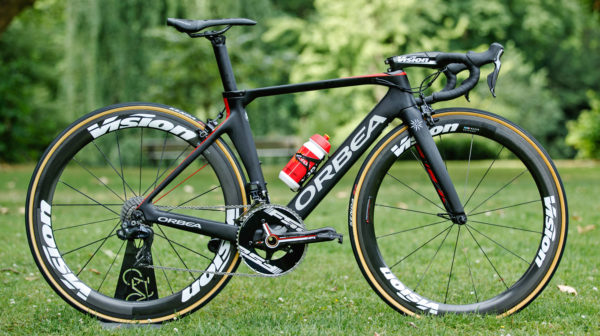
The new Orca Aero is debuting only as an OMR level bike – Orbea’s top-level hi-mod monocoque carbon construction.
The bike is being offered in six different complete bikes, plus the MyO custom color configuration to build your own unique bike at no extra charge. The Orca Aero comes in seven sizes from 49-60cm, and claims to clear 28mm tires.
The Orca Aero starts off from the most affordable $3300/3000€ M30Team with Shimano 105 and 35mm deep alloy wheels, and climbs up to the top $8500/7900€ M11iTeam with a SRAM Red eTap groupset, FSA Metron bar+stem, and 65mm deep carbon DT Swiss PRC1400 wheels. In between there are plenty of premium groupset options, and the ability to do custom color at any spec level.
